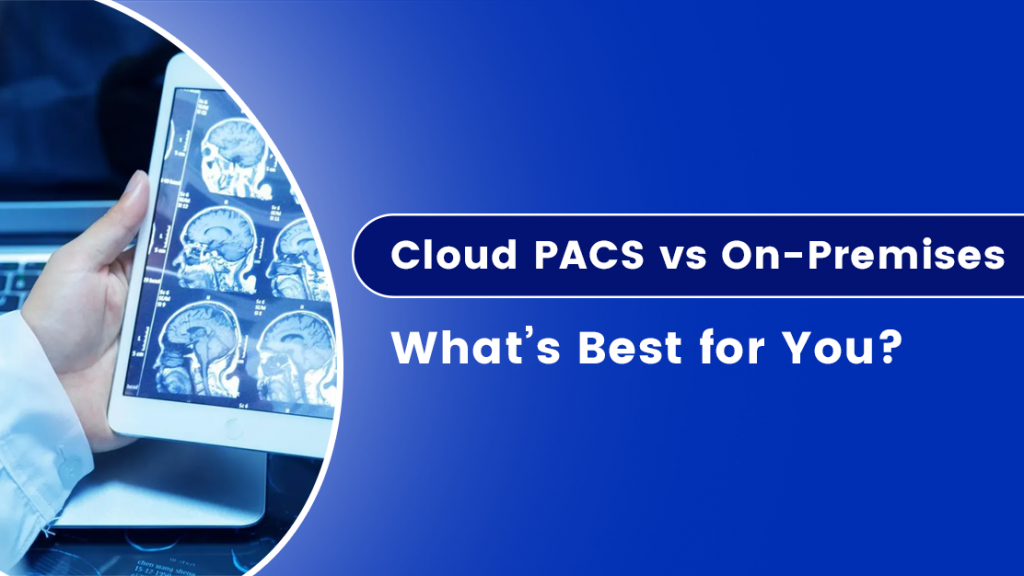In the fast-evolving world of medical imaging, choosing the right Picture Archiving and Communication System (PACS) is a critical decision for healthcare providers. With increasing demands for accessibility, security, and scalability, the debate between Cloud PACS and On-Premises PACS is more relevant than ever. Each solution offers distinct advantages and considerations depending on the needs, infrastructure, and goals of the medical facility.
Nandico, a leading name in radiology and healthcare imaging solutions, provides tailored PACS systems designed to support a wide range of clinical environments. Here’s a detailed look at the three PACS models to help determine which is best suited for your practice.
Understanding Cloud PACS
Cloud PACS is a web-based imaging solution that stores medical images on remote servers, allowing healthcare professionals to access and share diagnostic files via a secure internet connection. This model eliminates the need for on-site servers and reduces IT overhead.
Benefits of Cloud PACS:
- Remote Access: Physicians and radiologists can view images from any location, improving collaboration and reducing delays in diagnosis.
- Cost Savings: There are no large hardware investments or server maintenance expenses.
- Scalability: Storage capacity can be increased as needed, ideal for growing imaging volumes.
- Vendor-Managed Maintenance: Software updates and system monitoring are handled by the service provider.
Cloud PACS is especially beneficial for diagnostic centers, telemedicine providers, and small to mid-sized hospitals looking for affordability and flexibility.
What Is On-Premises PACS?
On-Premises PACS is a traditional setup where imaging data and system software are hosted locally on physical servers within the healthcare facility. The internal IT team is responsible for management, updates, and security.
Benefits of On-Premises PACS:
- Total Data Control: Facilities have full authority over how and where data is stored.
- Custom Configuration: Systems can be tailored to specific internal workflows or infrastructure needs.
- Offline Access: Image access remains unaffected by internet outages.
However, on-premises systems often involve significant upfront investment in servers, cooling, backups, and skilled personnel. They are more suitable for institutions with established IT departments and strict data sovereignty requirements.
Comparing the both Models
Each PACS model presents different strengths suited to specific healthcare environments. Cloud PACS is an excellent choice for smaller clinics and diagnostic centers that prioritize low upfront costs, remote access, and minimal IT involvement. It offers a flexible and scalable solution without the burden of hardware maintenance.
On-Premises PACS provides total control over data and infrastructure. It is best suited for organizations that have dedicated IT teams, specific compliance requirements, or limited internet reliability. Though it involves higher initial investment and ongoing technical upkeep, it remains a reliable choice for institutions that require strict data governance and offline access.
Understanding the distinct nature of each system helps healthcare providers align their technology strategy with operational needs, budget, and future objectives.
Choosing the Right PACS with Nandico
At Nandico, we offer customized PACS solutions to suit every medical environment. Whether you’re a small diagnostic center or a large multisite hospital network, our expert team evaluates your needs and provides guidance toward the most effective deployment.
- Choose Cloud PACS if you need cost-efficiency, fast setup, and remote access without managing infrastructure.
- Select On-Premises PACS if you require complete control over data storage, already have in-house servers, or need offline accessibility.
Our systems are fully compliant with global healthcare data regulations, including HIPAA and DICOM standards, ensuring both patient safety and legal confidence.
Conclusion
Selecting the right PACS solution is more than a technical decision—it’s a strategic move that affects clinical workflow, data security, and long-term growth. Cloud PACS offers simplicity and affordability and On-Premises PACS ensures hands-on control.

